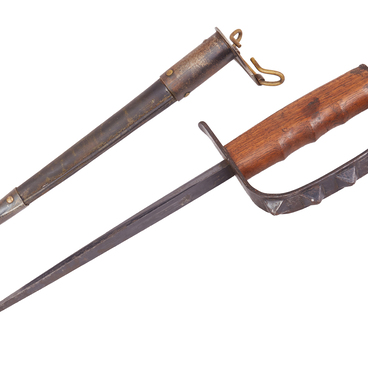A shashka is a slashing and stabbing long-bladed weapon. Usually, a shashka has a slightly curved blade with a double-edged tip and a hilt consisting of a grip with a bifurcating pommel, without a guard. A shashka, unlike a saber, had a characteristic wooden scabbard, covered with leather, with a ring for a belt on its convex side. It was suspended with the blade facing backwards.
Shashkas became widespread in the Russian army after the reform of 1881. They were an integral part of the Cossack armament. The son of Nicholas II, Tsesarevich Alexei, became the ataman of all Cossack troops on the day of his birth and was appointed chief of many regiments of the Russian army. Often, delegations from these military formations came to meet their little ataman and presented a gift — a cold weapon of small size, the so-called “children’s” sabers and shashkas.
The shashka displayed in the museum was presented to the Tsesarevich by the lower ranks of the Semyonovsky Life-Guards Regiment. This event was mentioned in the diary of Nicholas II:




